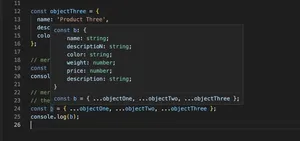Table of Contents
- Introduction
- Understanding Anonymous Functions in TypeScript
- Typing Parameters and Return Values
- Using Type Inference
- Typing Higher-Order Functions
- Typing Anonymous Functions in Generic Contexts
- Arrow Functions and Typings
- Handling Optional and Default Parameters
- Function Overloads and Anonymous Functions
- Intersections and Union Types with Functions
- Using Type Assertions with Functions
- Dealing with ‘this’ and Function Typing
- Best Practices for Anonymous Function Typing
- Conclusion
Introduction
TypeScript enhances JavaScript by adding types to the language. Anonymous function typing is key for writing type-safe functional JavaScript code with TypeScript. This guide covers the nuances of typing anonymous functions.
Understanding Anonymous Functions in TypeScript
In JavaScript, functions can be created without a name – these are called anonymous functions. TypeScript allows for typing these functions to ensure the code behaves as expected. For example:
let myFunction: (a: number, b: number) => number;
myFunction = function(x, y) {
return x + y;
};
This code snippet declares a variable myFunction which is a function taking two numbers and returning a number.
Typing Parameters and Return Values
Explicitly typing parameters and return values is the cornerstone of function typing:
const add: (x: number, y: number) => number = function(x, y) {
return x + y;
};
This ensures that the function can only be assigned a function with the correct signature.
Using Type Inference
TypeScript can often infer the type of anonymous functions:
const multiply = function(x: number, y: number): number {
return x * y;
};
Here the type of multiply is inferred without needing a separate type annotation.
Typing Higher-Order Functions
When functions return other functions, or take them as parameters, proper typing becomes crucial:
function repeatTwice(operation: (num: number) => number): (num: number) => number {
return function(x: number) {
return operation(operation(x));
};
}
The repeatTwice function takes and returns a function that operates on a number.
Typing Anonymous Functions in Generic Contexts
When working with generics, anonymous functions can still maintain strong typing:
function wrapInArray(value: T): T[] {
return [value];
}
const stringWrapper: (arg: T) => T[] = wrapInArray;
This stringWrapper has a generic type T which is inferred from the wrapInArray function.
Arrow Functions and Typings
Arrow functions can also be typed inline:
const processString: (input: string) => string = input => input.trim().toUpperCase();
Here the arrow function is immediately typed as it’s declared.
Handling Optional and Default Parameters
Function parameters can be optional or have default values:
const logMessage = (message: string, userId?: string)
const logMessage = (message: string, userId: string = 'Not signed in')
These function types respect optional and default parameters by allowing omitted or replaced with default values.
Function Overloads and Anonymous Functions
Overloads can be defined to let functions take different types:
function format(input: string): string;
function format(input: number): string;
function format(input: any): string {
// Actual implementation
}
TypeScript will choose the correct overload based on the input type.
Intersections and Union Types with Functions
Complex behavior can be modeled using intersections and union types:
type StringOrNumberFunction = ((x: string) => string) | ((x: number) => number);
A variable of type StringOrNumberFunction can be assigned a function that either accepts a string or a number.
Using Type Assertions with Functions
Sometimes type assertions are necessary to guide the type-checking process:
const getElement: (id: string) => HTMLElement = (id) => document.getElementById(id) as HTMLElement;
Type assertions should be used with caution as they override the compiler’s type checking.
Dealing with ‘this’ and Function Typing
Anonymous functions that deal with the this context require special attention in TypeScript:
class Component {
id: number;
init() {
document.addEventListener('click', function(this: Component) {
console.log(this.id);
}.bind(this));
}
}
The this parameter is typed to make sure it refers to an instance of Component.
Best Practices for Anonymous Function Typing
It’s best to rely on type inference when possible and provide explicit types when inference is insufficient or unclear. Always use the appropriate level of typing specificity needed for the context while avoiding over-specifying types to maintain code readability and flexibility.
Conclusion
TypeScript’s powerful typing capabilities for anonymous functions ensure better code quality and maintainability. By following the principles and examples outlined in this guide, programmers can write type-safe JavaScript that is easy to understand and less prone to runtime errors.
